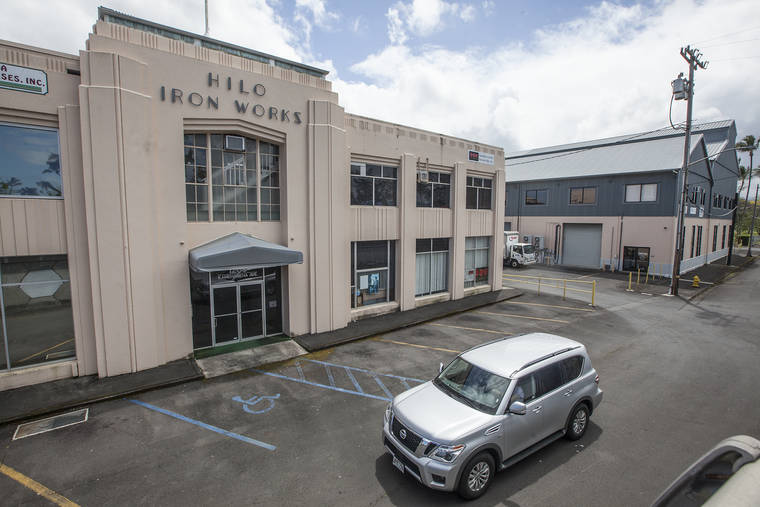The signing by President Donald Trump in June of a long-delayed disaster relief bill means Hawaiian Volcano Observatory can go about the business of finding a new site.
The former HVO facility in Hawaii Volcanoes National Park, behind the Jaggar Museum overlooking Kilauea volcano’s caldera, had to be abandoned because of earthquake damage prior to and during last year’s prolonged eruption, which destroyed more than 700 homes in lower Puna.
The $19.1 billion measure contains numerous appropriations for the Big Island, including $49 million for a new facility for HVO and $20.1 million for the volcano watchers to operate in their rented, long-term transitional facility in the Hilo Iron Works building, as well as replace instruments and equipment damaged by the earthquakes and eruption.
“We’re just beginning the formal federal process of finding a site. And then, we’re going to have to envision a design. These things take time,” Tina Neal, HVO scientist-in-charge said. “I don’t even have a rough timeline, but we’re here in the Iron Works for at least a few years until that’s all settled.
“The current thinking about a new facility … is that we’ll have a facility or building here in Hilo somewhere, and also a smaller facility back up in the national park.”
In addition to Iron Works, HVO is also renting warehouse space in Keaau and has an additional storage facility in the national park.
“Right now, about 90% of the folks are here in Iron Works and we’re still settling in,” she said. “And then, our technical crew is … in Keaau. And at that building, we have the bulk of our storage, and we’ve set up some work rooms (and) laboratory space for equipment manufacture and maintenance … .
“That’s our current plan until such time as we have a new building here in Hilo.”
HVO operated out of space at the University of Hawaii at Hilo until the move to the Iron Works building on Kamehameha Avenue. She said that despite the upheaval in facilities, HVO, which is part of the U.S. Geological Survey is “at 100% of our monitoring operation.”
“We have some very smart and sharp people on staff who have kept everything running despite the moves and the lava and the loss of some (monitoring) stations. We’re getting all the data we’re needing,” she said. “I will point out, though, the fact that folks are not up in the park means that we’ve lost some efficiency in terms of what’s going on in the park.”
Neal added that scientists now have to drive from Hilo to the national park to take measurements in the pond that’s appeared in Halema‘uma‘u crater at Kilauea’s summit.
“There’s a load of inefficiency in that, so we’re learning new ways of doing business. It’s not as easy as walking out the back door and there’s Halema‘uma‘u,” she noted. “… I would like to reassure that even though HVO is in long-term temporary housing, we are adequately monitoring all our volcanoes and conducting the important work that we need to.”
As for the recently discovered pond, Neal said the only thing known at this point is that it’s “slowly rising still.”
“We’ve not yet figured out when or how we’re going to get a sample of the water. So we’re still in the learning phase,” she said. “I can’t say we’ve learned anything terribly new except that it’s continuing to rise,” she said.
“We’re currently thinking long and hard about the appearance of the water up in the summit and also watching Mauna Loa carefully. It’s continuing to burble along with slightly elevated levels of earthquakes and deformation, but nothing alarming.”
Neal also shared her “wish list” for what a new facility would offer HVO’s scientists and support staff.
“We’ve sort of retrofit this historic building, the Iron Works, and most of our staff are in small, shared offices that aren’t quite optimal for research scientists to have time and space and quiet to work,” she said. “In a new facility, I would hope to have better office arrangements for the science staff. And we have no laboratory facility here, so we’re making do by using university resources and our warehouse, which is still under development. So I think our new building would incorporate any kind of laboratory needs that we would have going into the future.”
Email John Burnett at jburnett@hawaiitribune-herald.com.






